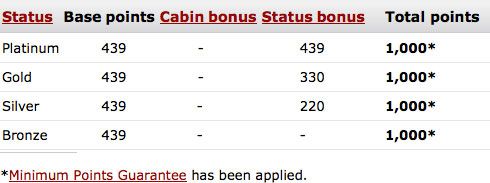The best frequent flyer program: Qantas vs Virgin Australia

What's the best frequent flyer program in Australia: Qantas Frequent Flyer or Virgin Australia's Velocity Frequent Flyer (also known as Velocity Rewards)?
That's a question we're often asked, so we put together a series of articles to show how the two frequent flyer schemes compared based on aspects such as lounge access, earning and buring points, upgrades, perks for different levels of membership and more.
Joining
Qantas officially charges anyone based in Australia $82.50 to join Qantas Frequent Flyer. However, this is effectively waived nowadays, because anyone can join the scheme for free through the Woolworths Everyday Rewards programme.
Joining Virgin's Velocity Rewards is free.
Both Qantas Frequent Flyer and Virgin Velocity Rewards don't expire points, as long as you earn or redeem points within a certain period -- 18 months for Qantas and 36 months for Velocity.
Verdict: That's a slight advantage for Virgin, but we'll call it a draw.
How earning points works
Virgin Australia provides five points per dollar spent on domestic airfares. As you work your way up the ranks of the Velocity Rewards program, you earn more points for the same number of dollars -- 50% more if you're a silver member, 75% more if you're gold and 100% more if you're platinum.
International flights are calculated differently, on a more industry-standard points-per-mile basis, with differing points depending on whether the flight is sold by Virgin Australia or by another airline.
The 50/75/100% bonuses above apply on international flights sold by Virgin Australia, V Australia, Polynesian Blue or Pacific Blue, or Etihad, under those airlines' flight codes (for example, DJ for Virgin Australia or VA for V Australia).
But while you can earn Velocity Rewards points on flights sold directly by Air New Zealand, Delta, Skywest, Malaysia Airlines, Singapore Airlines and some others, earning rates vary and do not attract the status bonuses detailed above.
Because of Virgin Australia's strategy of forming alliances with many airlines to create a global network, the Velocity Rewards program is inherently more complicated when it comes to international flights. We've explained the international side of it in detail here.
Qantas Frequent Flyer is easier to understand. It provides one point per mile (not kilometre) travelled, with a minimum of 1,000 points for each one-way flight segment. Higher-level Qantas Frequent Flyer members earn more points for the same distance -- 50% for silver, 75% for gold, and 100% for platinum membership, and of course, flying in higher cabin classes provides higher point earning.
However, just because you get 1,000 points for a Sydney to Melbourne run as a Bronze Frequent Flyer doesn't mean you get 2,000 points as a Platinum. The bonuses only apply on the basic mileage (about 439 for a Sydney to Melbourne hop) -- not the 1,000 point minimum that Qantas awards even the shortest flights.
As a result, everyone from bronze to platinum earns 1,000 points on short flights. This screenshot from the Qantas Earning Points Calculator demonstrates why:
So is Velocity or Qantas better?
Qantas' program is much easier to understand for domestic flights than Virgin's, because the number of miles between two airports never changes -- so you can always be sure how many points you're going to earn.
With Virgin, if you fly on cheap tickets, you'll earn commensurately few points. Qantas is more generous on this front, as it applies a 1,000 point minimum regardless of how little a ticket costs -- or how short a flight is.
As a result, unless you're a gold/silver/platinum flyer with Velocity Rewards, for domestic economy flights, Qantas wins easily. Take Sydney to Melbourne as an example:
A Qantas Sydney to Melbourne flight including taxes and surcharges costs 11,000 points. To earn that same flight, it'd be necessary to fly 11 times between Sydney and Melbourne (11 x 1,000 points).
With Virgin Australia, a typical Sydney to Melbourne fare (booked a week in advance) is $109. On a basic Velocity membership, that would earn 545 points. However, redeeming the same flight inclusive of taxes and surcharges would cost 9,800 points -- so you'd have to fly 18 times to get the reward flight.
It's a completely different story for business class domestic fares, though -- Virgin Australia shines through for these.
A Qantas Sydney-Perth business class flight including taxes and surcharges costs 39,000 points to redeem as an award flight. To earn the same flight, it'd be necessary to fly 13 times between Sydney-Perth in business class (13 x 3,062 points).
However, on Virgin Australia, to earn the same flight you'd only have to fly five times. Why? A Sydney-Perth business class flight including taxes and surcharges costs 36,700 points -- similar to the Qantas 'points price'.
but each time you flew on a typical $1,399 fare with Virgin Australia, you'd earn 6,995 Velocity points -- and that's assuming you don't have silver/gold/platinum status.
In fact, if you were Velocity Gold (with its 75% point earning bonus), you'd be earning a whopping 12,241 points for each return flight, so you'd get every fourth business class trip free!
This puts the Qantas Frequent Flyer scheme to shame -- even Platinum members would only get every ninth trip free.
Verdict: If most of your flights are short-hop domestic economy, Qantas will be the best value. However, if you're flying domestic business class, Virgin Australia is vastly better value than Qantas.
Credit cards and retailer bonus points
One final point worth noting is that it's very easy to earn extra points with Qantas not through flying, but rather through credit cards and retailer programs. Woolworths Group stores (including Woolworths, Dick Smith, BWS and Big W) provide one point per dollar spent above a $30 threshhold ($50 at Dick Smith), and there are dozens of credit cards that can feed points back into your Qantas account.
While there are also many credit cards that feed points into Velocity Rewards (including the rather extraordinary Amex that gives you two-for-one on business class bookings), retailer earning opportunities are thinner on the ground.
On the other hand, you can earn six Velocity Reward points on each dollar you spend on electricity with Lumo Energy, and given most people spend $2,000+ each year on electricity, this somewhat balances things out.
If John Borghetti eventually seals a deal with Coles Supermarkets (or indeed some major revamp of the whole FlyBuys program to feed points into Velocity) that would make Velocity Rewards considerably more attractive compared to Qantas Frequent Flyer.
Qantas Frequent Flyer vs Velocity: AusBT's in-depth analysis
- Which program gives more points for domestic flights?
- Which program earns the most points for international flights?
- Which program gets you to silver/gold/platinum the fastest?
- Ease of getting upgrades
- How paid lounge membership compares
- How silver perks compare
- How gold and platinum perks compare


Qantas - Qantas Frequent Flyer
18 May 2011
Total posts 233
I think another thing worth noting is a get lifetime recognition with Qantas if I earn it whereas I'm pretty sure Velocity still doesn't offer that.
Qantas
24 Oct 2010
Total posts 177
Ah, very good point! I'll be covering the status levels in coming days... will make sure to cover the 'lifetime' side of it too.
Virgin Blue - Velocity Rewards
12 May 2011
Total posts 66
Very interesting! We will have to do this review again when the virgin velocity re-vamp is completed and most likely an new name? We will have to wait and see! But that is a very smart move with virgin's business class reward!
Virgin Blue - Velocity Rewards
12 May 2011
Total posts 31
Don't forget to include the Jetstar problem in the equation... Qantas' route netwrok is now divided up between two airlines and there are now many towns and cities that are exclusively Jetstar where QF doesn't (or didn't) offer a FF program option (eg. Australia's two largest non capital cities Newcastle and the Gold Coast). Recent changes mean you can pay extra for the privilege of earning points and SC's out of these destinations (which is probably better than nothing) but there are large parts of Australia that aren't really serviced by the QF FF program at all and haven't been for years. If your travel mix (as mine does) involved regular visits to these places QF diminishes in relative value very quickly.
Qantas
24 Oct 2010
Total posts 177
Very good point. Thanks for the feedback. I'm not sure I'll have time this week to do a detailed comparison of how the QFF/Velocity route coverage compares, but I will certainly work it into the stories to point out that where you live or travel to often can make a big difference to the value of the programs.
Hi Guest, join in the discussion on The best frequent flyer program: Qantas vs Virgin Australia